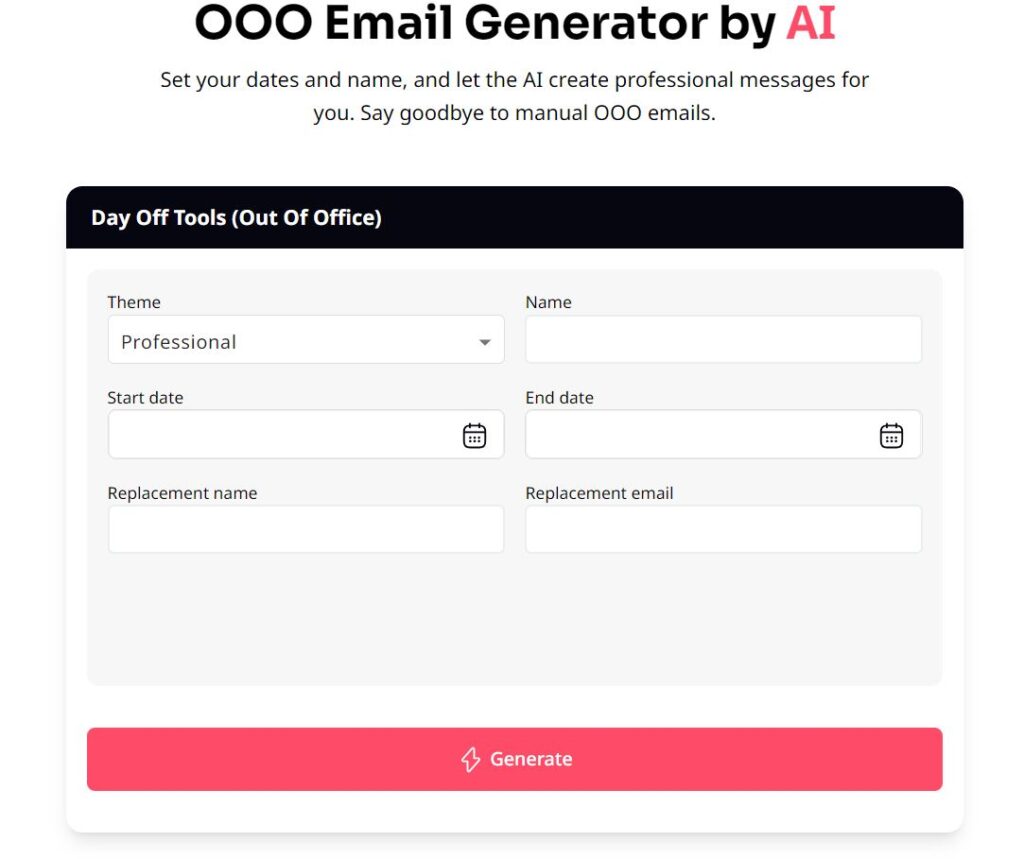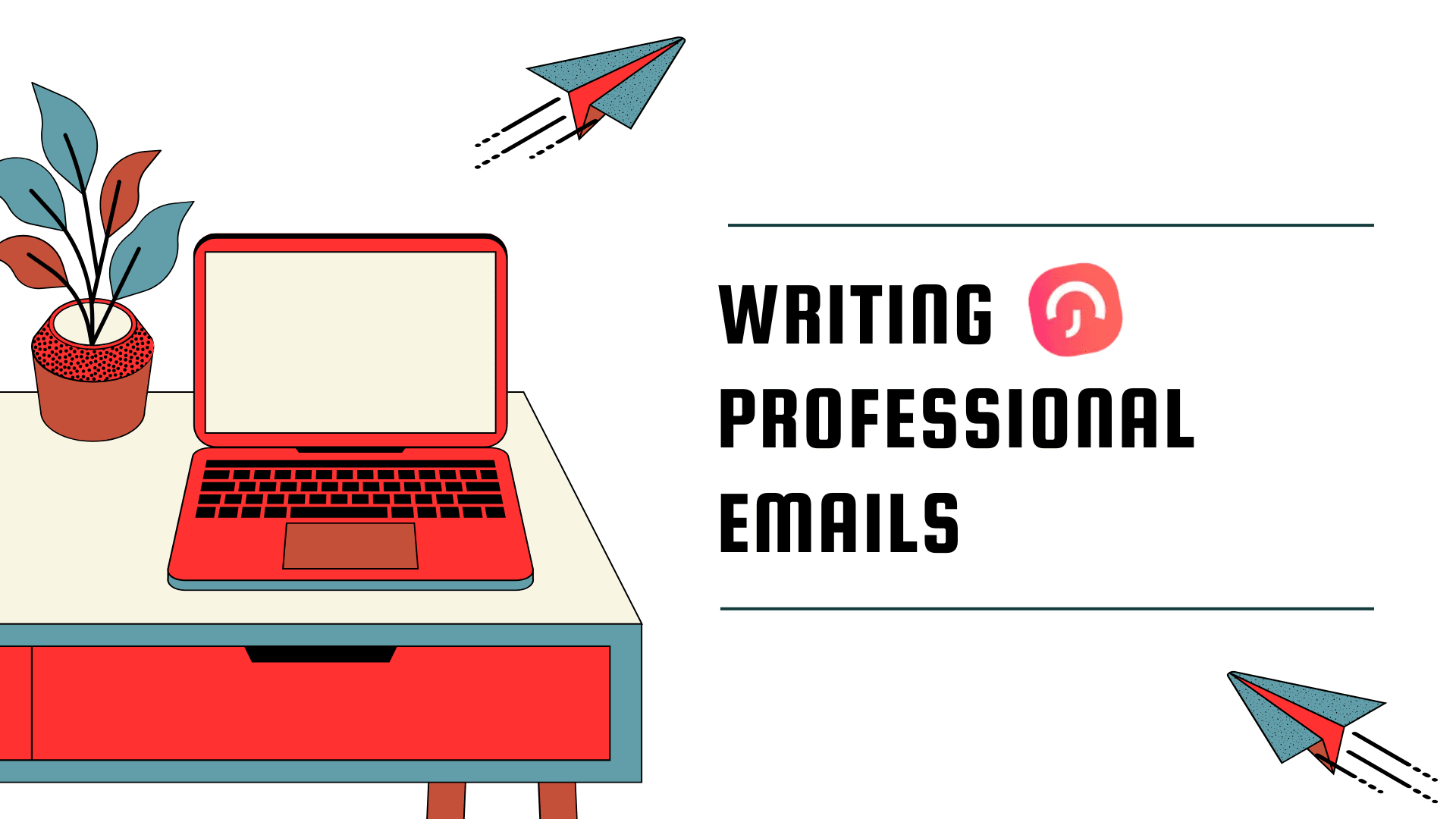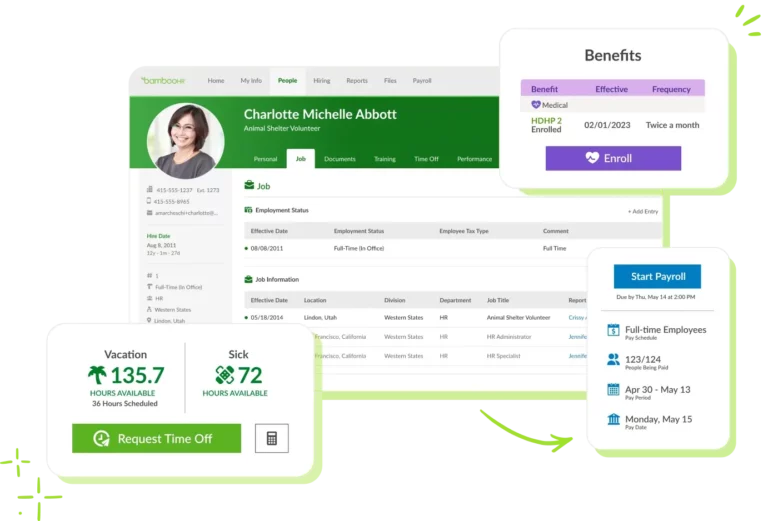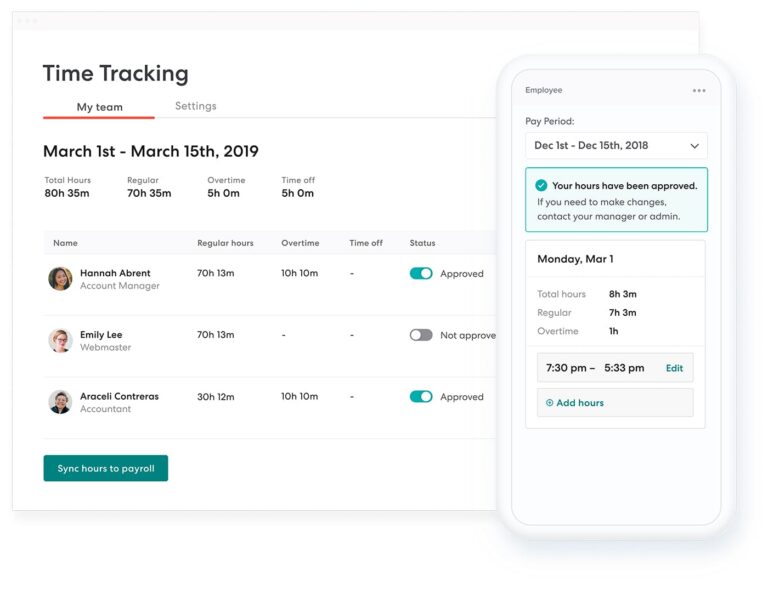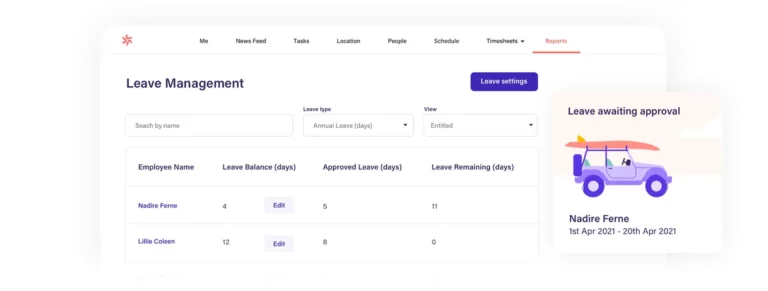Taking time off from work is essential for rest, relaxation, and maintaining a healthy work life balance. Whether it’s for a vacation, personal errands, or a family emergency, knowing how to properly request Paid Time Off (PTO) through email is important for ensuring a smooth approval process. In this article, we will explore how to structure a PTO request email, what details to include, and provide examples for different scenarios. Additionally, we’ll introduce an efficient tool called Day Off that can streamline the process of managing PTO requests.
Understanding the Basics of a PTO Request Email
Before diving into the structure of a PTO request email, it’s important to understand what PTO is and why it’s significant. PTO stands for Paid Time Off, and it refers to the time employees can take off from work while still receiving their regular pay. This may include vacation days, sick leave, personal days, or even mental health days.
When writing a PTO request email, it’s crucial to approach it with professionalism, ensuring clarity and politeness. Your email should contain the following basic components:
- Subject Line: Make your subject clear and concise (e.g., “PTO Request – [Your Name] – [Dates Requested]”).
- Introduction: Start with a polite greeting and state your intention clearly.
- Details of the PTO Request: Include the dates you plan to take off and the reason for your absence (optional but sometimes helpful).
- Transition Plan: Explain how you will ensure a smooth transition of your work while you are away. This may involve assigning tasks to a colleague or outlining how you plan to complete important tasks before your leave.
- Closing and Politeness: Thank your manager or supervisor for considering your request, and end with a polite closing.
How to Structure a PTO Request Email
Below is a detailed breakdown of how to format and write your PTO request email:
Subject Line
Make your subject line specific and to the point. A clear subject line helps your manager understand the purpose of your email at a glance. Examples include:
- “PTO Request: [Your Name] – [Dates]”
- “Request for Paid Time Off – [Your Name]”
- “Vacation Request: [Your Name] – [Start Date] to [End Date]”
Greeting
Start your email with a polite greeting. Address your manager or supervisor formally:
- “Dear [Manager’s Name],”
- “Hello [Manager’s Name],”
Body of the Email
The body of the email should include the following components:
State the Purpose of the mail:
Mention that you are requesting time off. For example:
- “I am writing to formally request PTO for the following dates…”
- “I would like to request vacation time from [Start Date] to [End Date].”
Provide Specific Dates and Details:
Specify the exact dates you plan to take off and mention whether these dates include weekends or holidays.
Optional: State the Reason (Briefly):
While it’s not always necessary, providing a brief reason for your leave may be helpful, especially if it’s for medical reasons or a personal emergency. For example:
- “I plan to take this time off for a family vacation.”
- “I need to take a few days off to attend to personal matters.”
Explain the Transition Plan:
Show your responsibility by explaining how you plan to handle your workload. You could mention tasks you plan to complete before your leave or name a colleague who will cover your duties while you are away.
Thank the Manager:
Express gratitude for their time and consideration:
- “Thank you for considering my request. I appreciate your understanding.”
- “Thank you for your support and for reviewing my PTO request.”
Closing and Signature
Conclude your email with a professional closing and your name:
- “Best regards,”
- “Sincerely,”
- “Kind regards,”
Examples of PTO Request Emails
Below are some examples to guide you based on different scenarios:
Example 1: Simple Vacation Request
Subject: PTO Request – John Doe – June 15 to June 20
Body:
Dear [Manager’s Name],
I hope you’re doing well. I am writing to formally request PTO from Monday, June 15 through Saturday, June 20. I plan to use these days for a short family vacation.
To ensure a smooth workflow, I will complete my ongoing projects before June 12 and will delegate my remaining tasks to [Colleague’s Name] during my absence.
Thank you for considering my request. Please let me know if you need any further information.
Best regards,
John Doe
Example 2: Personal Leave Request
Subject: Personal Time Off Request – Jane Smith – July 10
Body:
Hello [Manager’s Name],
I am writing to request a PTO day on Friday, July 10. I need to attend to some personal matters that require my presence.
I will ensure all my deliverables for this week are completed before Thursday, July 9, and [Colleague’s Name] has kindly agreed to cover any urgent matters that may arise during my absence.
Thank you for your understanding and support.
Best regards,
Jane Smith
Example 3: Extended Leave for Family Emergency
Subject: PTO Request for Family Emergency – [Your Name]
Body:
Dear [Manager’s Name],
I hope you are doing well. Unfortunately, I am dealing with an unexpected family emergency that requires my immediate attention. I would like to request PTO from [Start Date] through [End Date] to manage this situation.
I understand this may cause some inconvenience, and I am committed to minimizing any disruptions. I have informed [Colleague’s Name] of my absence, and they have agreed to handle any urgent tasks that may arise. Additionally, I will complete all pending work before my leave and remain available for any critical communication if necessary.
Thank you for your understanding and support during this challenging time. Please let me know if you need any further details or if we can discuss my plan further.
Sincerely,
[Your Name]
Example 4: Medical Leave Request
Subject: Medical Leave Request – [Your Name]
Body:
Hello [Manager’s Name],
I am reaching out to request medical leave from [Start Date] to [End Date] due to a scheduled medical procedure that I need to undergo. The doctor has advised me to take time off for recovery, and I will need these days to rest and recuperate.
I will ensure that all my tasks and responsibilities are completed before my leave, and I have briefed [Colleague’s Name] on any urgent matters that may need attention while I’m away. I will also remain available via email for any critical concerns.
I appreciate your understanding and support. Thank you for considering my request, and please let me know if any additional information is needed.
Best regards,
[Your Name]
Example 5: PTO Request for Vacation During a Busy Season
Subject: Vacation PTO Request – [Your Name] – [Dates]
Body:
Dear [Manager’s Name],
I am writing to request vacation PTO from [Start Date] through [End Date]. I am aware that this period is particularly busy for our team, so I completely understand if these dates are not suitable. If that is the case, I am willing to adjust my plans and reschedule my leave for another time that works better for the team.
To minimize the impact of my absence, I will complete all critical tasks before my leave and work closely with [Colleague’s Name] to ensure they are fully briefed on any ongoing projects. I am also open to setting up check ins while I am away if any urgent issues arise that require my attention.
Thank you very much for considering my request. I am happy to discuss further or adjust my plans as needed to support our team.
Best regards,
[Your Name]
Example 6: Last Minute PTO Request
Subject: Urgent PTO Request – [Your Name]
Body:
Hello [Manager’s Name],
I apologize for the short notice, but I need to take PTO on [Date] due to unforeseen personal circumstances. I understand that this is a last minute request, and I am willing to assist remotely if anything urgent comes up during my absence.
To help ensure that my absence doesn’t impact the team’s productivity, I have already delegated my tasks for the day to [Colleague’s Name] and have briefed them on all necessary information.
I appreciate your understanding and apologize again for any inconvenience this may cause. Please let me know if you need any further details.
Best regards,
[Your Name]
Example 7: Partial Day PTO Request
Subject: Half Day PTO Request – [Your Name] – [Date]
Body:
Dear [Manager’s Name],
I hope you’re doing well. I would like to request a half day of PTO on [Date]. I have a [doctor’s appointment/other commitment] in the afternoon, and I will need to leave the office at [Time].
To ensure a smooth transition, I will finish all priority tasks in the morning and will coordinate with [Colleague’s Name] to cover any remaining duties during my absence.
Thank you for understanding, and please let me know if there are any concerns or if we need to discuss this further.
Sincerely,
[Your Name]
Example 8: Request for PTO Due to a National Holiday (Extended Weekend)
Subject: PTO Request for Extended Weekend – [Your Name]
Body:
Hello [Manager’s Name],
I would like to request PTO for [Date] and [Date] to extend the national holiday weekend and spend some time with my family. The additional days off will allow me to make the most of the holiday break.
I am currently working on [Project Name], and I will ensure that it is on track before my leave. I will coordinate with [Colleague’s Name] to manage any follow ups that may be required during my absence.
I appreciate your consideration and look forward to your response.
Kind regards,
[Your Name]
Example 9: Maternity Leave Request
Subject: Maternity Leave Request – [Your Name]
Body:
Dear [Manager’s Name],
I am writing to formally request maternity leave starting from [Start Date] and lasting until [End Date]. Based on our company’s maternity leave policy, I plan to take [X weeks/months] off.
During this period, I have arranged for [Colleague’s Name] to take over my responsibilities, and I am working on detailed handover notes to ensure a smooth transition. I am also available to discuss any other arrangements that may need to be made prior to my leave.
Thank you for your support and understanding during this important time. I appreciate the opportunity to coordinate with you on this matter.
Best regards,
[Your Name]
Example 10: PTO Request for Educational Leave
Subject: PTO Request for Educational Purposes – [Your Name]
Body:
Hello [Manager’s Name],
I hope you’re doing well. I am writing to request PTO from [Start Date] to [End Date] to attend a professional development course that I believe will greatly benefit my work and contribute to our team’s goals.
I will ensure that my tasks are completed before my leave, and I have coordinated with [Colleague’s Name] to handle any urgent matters that may arise in my absence. I also plan to bring back valuable insights from this course that can be shared with the team.
Thank you for your understanding and support for my professional growth. Please let me know if you have any questions or need further information.
Sincerely,
[Your Name]
Simplifying the PTO Request Process with Day Off App
In addition to the traditional email approach, there are modern tools that can streamline the PTO request process, such as the Day Off App. This app is designed to make managing and tracking time off requests easy for both employees and employers. Let’s explore how the app works and its benefits.
What is Day Off App?
The Day Off App is an intuitive and user friendly platform designed to simplify the PTO management process. It allows employees to request time off, track their PTO balances, and receive approval notifications directly through the app. Managers, on the other hand, can review and approve requests with just a few clicks, eliminating the need for lengthy email chains.
How Does It Work?
Employee Side:
- Employees log in to the app and navigate to the PTO request section.
- They select the type of leave they wish to take (e.g., vacation, sick leave, personal leave) and enter the dates.
- They have the option to add a note explaining the reason for their request if needed.
- Once submitted, the app automatically sends the request to their manager for approval.
Manager Side:
- Managers receive a notification of the new PTO request and can review the details, including any notes provided.
- They can approve or reject the request directly through the app, and employees are notified of the decision instantly.
- The app also provides managers with an overview of team members’ upcoming absences, allowing them to plan workload distribution accordingly.
Benefits of Using Day Off App
- Efficiency: The app simplifies the PTO request and approval process, saving time for both employees and managers. There’s no need for long email chains or waiting for manual approvals.
- Transparency: Employees can check their PTO balances and track their approved and pending requests, which enhances transparency and clarity.
- Centralized Management: Managers can view and manage all team members’ PTO in one place, making it easier to ensure that projects and tasks are covered during absences.
- Convenience: The mobile friendly platform means employees and managers can access and manage PTO requests anytime, anywhere, providing flexibility and convenience.
By integrating the Day Off App into your company’s workflow, you can streamline the PTO management process, reduce miscommunication, and improve employee satisfaction.
Tips for Ensuring Your PTO Request Gets Approved
Even with the proper format, there are additional steps you can take to increase the likelihood of your PTO request being approved:
- Plan Ahead: If possible, request your PTO well in advance, especially for longer leaves. This shows responsibility and allows your manager time to adjust schedules and resources.
- Be Flexible: If your desired dates are during a busy period, offer alternative dates as a backup. This shows that you are willing to compromise.
- Provide a Transition Plan: Always outline how your responsibilities will be managed while you’re away. This demonstrates your commitment to minimizing disruption.
- Communicate Directly: If your manager prefers direct communication, consider following up your email request with a quick conversation or meeting. This can help clarify any questions or concerns they might have.
Frequently Asked Questions (FAQ)
Can I request PTO verbally instead of through email?
While some managers may approve verbal requests, it’s best to follow up with an email or use your company’s official system. This creates a written record, avoids misunderstandings, and ensures your request is documented for future reference.
How far in advance should I submit my PTO request?
For the best chance of approval, submit your PTO request at least 2–4 weeks in advance, especially for extended vacations. This gives your manager time to arrange coverage and minimizes disruption to team schedules.
Can my manager deny my PTO request?
Yes. Managers can deny PTO requests if your absence would impact critical projects, deadlines, or staffing needs. Being flexible with dates or offering alternatives can improve your chances of approval.
What should I do if I don’t receive a response to my PTO request?
If you haven’t heard back within a reasonable timeframe (e.g., 3–5 business days), follow up politely. A brief email or message referencing your original request can help ensure it was received and is being reviewed.
Is it okay to request PTO for mental health days?
Yes. PTO can be used for mental health, rest, or any personal reason. You don’t need to share specific details, simply request the time as personal leave if you prefer privacy. Taking care of your mental well being is just as important as physical health.
Conclusion
Writing a PTO request email doesn’t have to be a stressful process. By following the guidelines outlined in this article and providing clear, professional communication, you can ensure a smooth and efficient request process. Whether you prefer the traditional email method or want to utilize a modern solution like Day Off Leave Tracker, the key is to be organized, polite, and proactive. Embrace these tools and techniques to maintain a healthy work life balance while demonstrating professionalism and responsibility in managing your time off.



